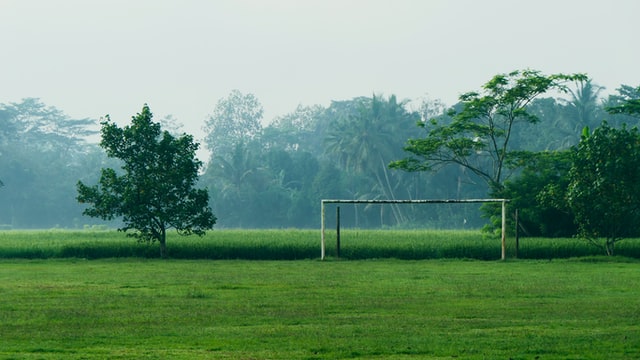In the hour or so leading up to a soccer match, the referee takes the field and walks around. Rather than just seeing the sites, the referee is actually inspecting the field of play to make sure it’s safe!
But what exactly is a pitch inspection in soccer? And why is it necessary? Below, we take a look at everything you need to know about soccer pitch inspections and explain why they’re such a crucial aspect of the beautiful game.
Why are pitch inspections necessary?
Pitch inspections are important in soccer because it determines whether the pitch is playable or not. Conducted by the referee at least 30-60 minutes before kick-off, a pitch inspection is completed at all levels of the game. If the weather is particularly bad, a pitch inspection may also be carried out the day before a match, which will determine if the game can go ahead the following day.
Who is responsible for a pitch inspection in soccer?
The referee is responsible for conducting a pitch inspection in soccer. It is part of a referee’s duty to ensure the pitch is safe for the players, so he or she is required to check the playing field before the match can start.
In some instances, particularly in amateur soccer, club officials and even ground staff can postpone a match if their pitch is deemed unplayable. This doesn’t just protect the players, but it also keeps the pitch in good shape for the rest of the season.
If too many games are played in bad weather, the quality of the playing surface will deteriorate as the season progresses. But typically, the referee has the final say on whether a match will go ahead, not club officials.
What does the referee check for?
When the referee conducts a pre-match pitch inspection, he or she has to check the entire playing surface is safe for play. The inspection includes the following:
- Goalmouths and penalty areas
- The goal itself and whether the woodwork is safe and the net is tightly fastened
- The centre of the field
- All the markings are correct
- The corners and flags are safe
As the referee makes their way around the field, they will be checking for debris and bits and pieces that shouldn’t be there. They will also be checking that the surface is safe for the players.
When the weather has been bad, they will check that there isn’t too much surface water to cause the players when they’re passing and shooting. Equally, if the game is taking place in cold weather, the referee will check the pitch to make sure it isn’t frozen.
Ultimately, a pitch inspection is a safety check to ensure the pitch is actually playable before players take to the field.
Do all types of pitches need to be inspected before a match?
Equally, the goal areas need to be checked by the referee to make sure they are the correct size and that the nets and posts are safely anchored to the ground. Again, this doesn’t matter if the match is taking place on grass or a synthetic surface; it still needs to be checked.
In friendly matches without a referee, the players should get together and check the field before starting the match. This is just to be on the safe side, as you don’t want to increase the risk of picking up an injury.
What causes a match to be called off after a pitch inspection?
The main reason that a soccer match gets called off after a pitch inspection is if the weather has made the pitch unplayable. Typically, this will be if there’s too much standing water in the goal areas or if the drainage on the pitch overall is poor and there are puddles lying in different sections.
Equally, during a cold snap, a match will be called off if the pitch has frozen solid, as it becomes particularly dangerous for the players.
Although a lot less common, the referee can deem that a pitch is unplayable if the grass is too long, if the markings are incorrect or invisible, and if there are any other hazards that make the match unsafe. A lack of corner flags and goalposts are further reasons why a referee might call off a match.
Ultimately, there are lots of reasons why a referee might call off a match after a pitch inspection, but they’re all to do with the safety of the players. This is because the referee has a responsibility to ensure the pitch is playable, as the well-being of the players is paramount.
Are pitch inspections necessary in pro and amateur soccer?
No matter the level of the sport, pitch inspections are necessary. Whether your kids are competing in little league soccer or you tune into an MLS match, the referee will have conducted a pitch inspection before kick-off.
Although often overlooked by supporters and players alike, pitch inspections are actually integral to the pre-match routine and must be conducted at all levels of the sport.
After all, if a player was to get injured because the pitch they were playing on was unsafe, it would spell trouble for the referee who permitted the game to be played in the first place. While it’s disappointing when a match is called off, it’s the right thing to do if a soccer pitch isn’t safe to play on.
Recap: What is a pitch inspection in soccer?
A pitch inspection is conducted by the referee before a match takes place. The referee checks all areas of the pitch to ensure it is safe and gives the green light to the teams around 30-60 minutes before kick-off.
If a referee calls off a game, it’s important for everyone to respect the decision, as it was most probably made with the health and safety of all the players in mind.

